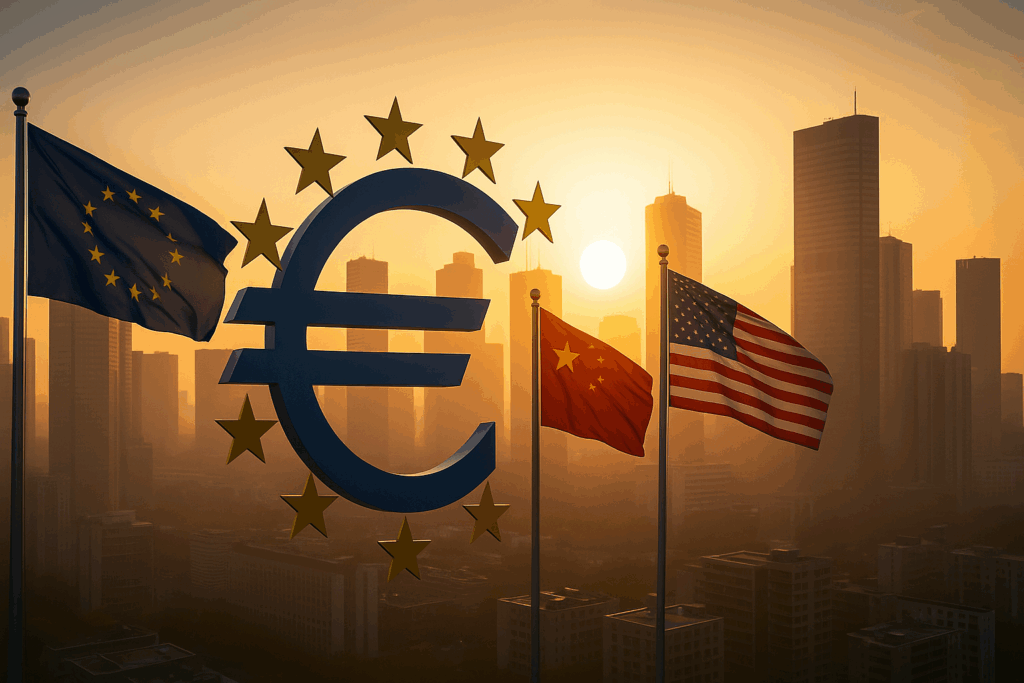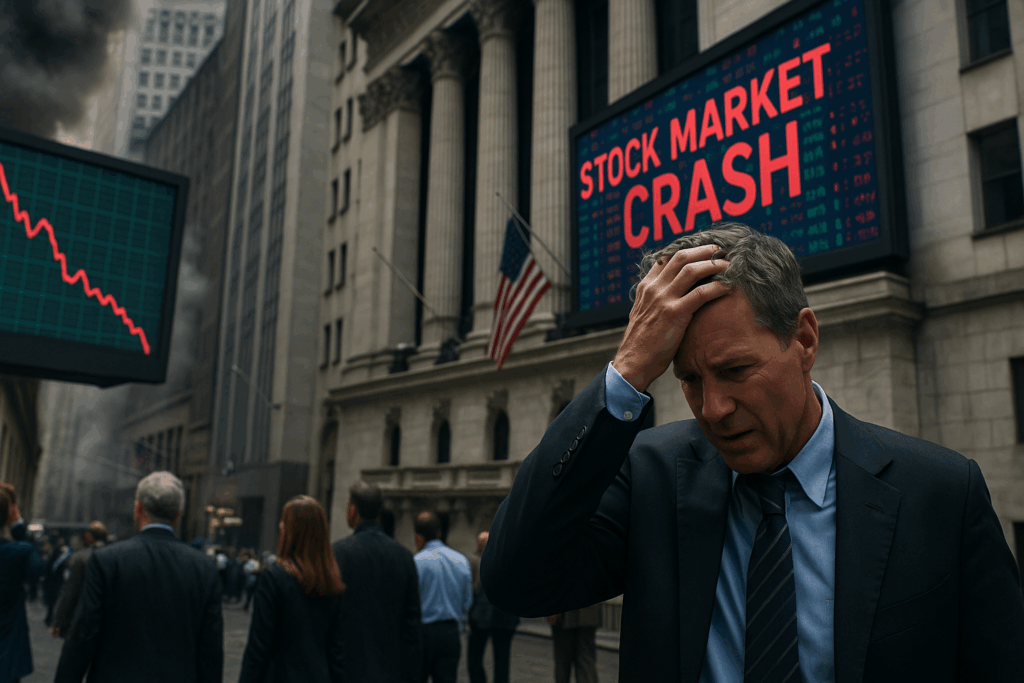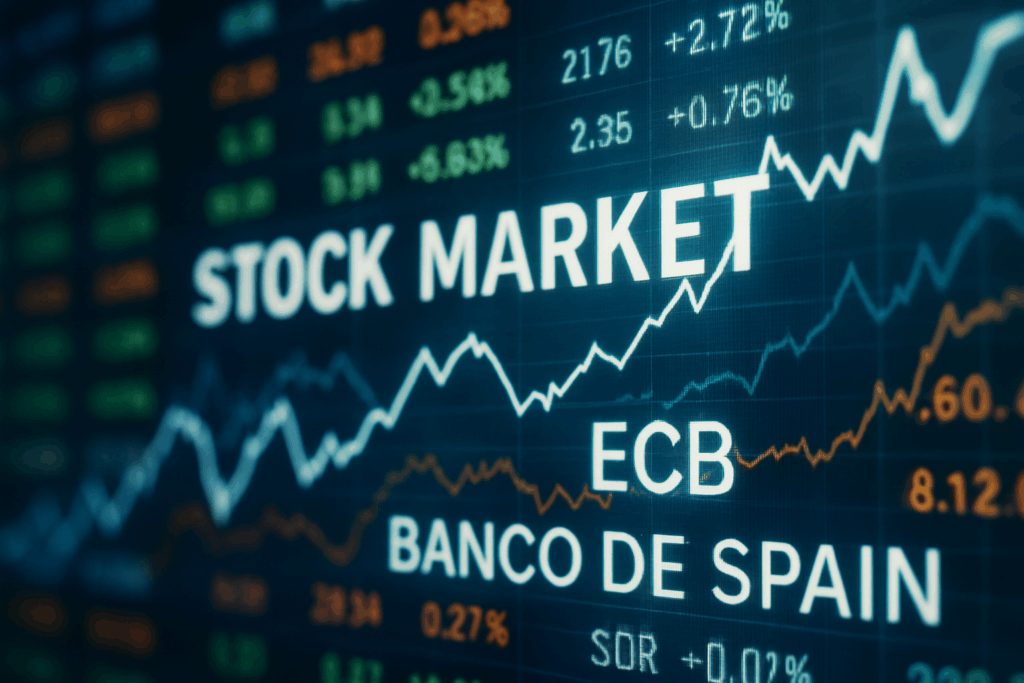After having gone through the old times in the first part of this series, and having looked at the 20th century in Part II, it is now time to explore the current situation with Part III.
2000–2008: The Decade of Confidence — and Growing Imbalances
As the 21st century began, the mood was buoyant. Globalization was accelerating, technology seemed to promise boundless progress, and the post–Cold War order gave hope for lasting stability. In Europe, the newly introduced Euro — first in 1999 for electronic transfers, then in physical form in 2002 — was more than just a currency. It was a political and economic statement of unity.

In the United States, the burst of the dot-com bubble in 2001 triggered a sharp policy response. The Federal Reserve slashed interest rates to stimulate growth. What followed was an era of cheap money, where risk appeared manageable, and credit was plentiful. Housing markets surged, and the financial sector celebrated a new age of innovation — building ever more complex financial products that seemed to defy traditional limits of risk.
Meanwhile, central banks in Europe took a more cautious approach. The newly formed European Central Bank, heavily influenced by the legacy of the German Bundesbank, maintained a strict focus on price stability. Countries like Germany pursued fiscal discipline and underwent painful labor market reforms, setting the stage for future strength. But others — such as Italy, Spain, and Greece — took advantage of the low-interest environment to rack up debt behind the veil of eurozone unity. The monetary union had not erased Europe’s internal economic divergence — it had merely concealed it.
Across the globe, China was rising. After joining the WTO in 2001, the country rapidly became the world’s manufacturing engine. Its currency, the yuan, was tightly pegged to the US dollar, kept deliberately undervalued to support exports. Trade surpluses piled up, and with them, vast reserves — much of which were recycled into US Treasury bonds. This cycle helped keep US interest rates low, even as government deficits ballooned. It was a textbook example of global financial interdependence — and imbalance.
Elsewhere in France, the UK, and other European countries, the spirit of deregulation ruled. Financial institutions grew into global behemoths, lightly supervised and highly interconnected. The prevailing belief was that markets would self-regulate, that risk could be dispersed and priced efficiently, and that systemic failure was a thing of the past.
Inflation remained low. Growth was steady. Debt was seen as sustainable. But under the surface, the global financial system rested on trust, cheap liquidity, and expanding credit — a precarious balance. The illusion held longer than many expected. When cracks began to appear in the US subprime mortgage market around 2006, they were dismissed as minor.
But they weren’t.
2008–2012: The Shockwave — and the Search for Stability
By 2008, the cracks beneath the surface had widened into fractures. What had started as a slowdown in the U.S. housing market quickly unraveled into the most severe financial crisis since the Great Depression. Banks collapsed, credit froze, trust vanished — and the entire architecture of global finance teetered on the edge.

The trigger came with the fall of Lehman Brothers in September 2008. It marked the moment when the illusion of control evaporated. Financial institutions that were once deemed “too big to fail” suddenly became too entangled to save. A decade of easy credit, opaque derivatives, and excessive leverage had created a system so fragile that the failure of a single player sent shockwaves around the globe.
Governments scrambled to respond. Massive bailouts, emergency liquidity programs, and coordinated central bank actions were launched almost overnight. In the U.S., the Federal Reserve dropped interest rates to near zero and introduced unprecedented measures — from quantitative easing to direct market interventions. In Europe, the picture was more complicated: the eurozone’s single currency clashed with the reality of 17 sovereign fiscal policies. The European Central Bank hesitated, constrained by its mandate and the diverging interests of its members.
What began as a banking crisis soon morphed into a sovereign debt crisis — particularly in Southern Europe. Greece, Portugal, Ireland, and eventually Spain found themselves at the mercy of bond markets. Yields soared, deficits widened, and public finances collapsed under the pressure of recession and austerity. The eurozone, still young and politically incomplete, faced an existential threat.
Meanwhile, in Germany, memories of hyperinflation ran deep. There was little appetite for bailouts or fiscal transfers — and much emphasis on structural reform. The German economy weathered the storm better than most, thanks in part to earlier reforms and strong export performance. But even Germany was forced to step in, underwriting large parts of the European rescue efforts through mechanisms like the EFSF and later the ESM.
Across the Atlantic, the U.S. Dollar reasserted its dominance — ironically, as a safe haven. Despite originating the crisis, the U.S. benefitted from global demand for Treasury bonds. The Federal Reserve’s actions helped stabilize markets, though at the cost of expanding the balance sheet to historic levels.
China, meanwhile, launched a massive stimulus program — one of the largest in the world. Infrastructure spending surged, real estate boomed, and growth was sustained — at least for the moment. But the global trade system had shifted. Export-driven growth models showed their limits. The illusion that globalization alone could deliver stability had been shattered.
By 2012, the acute phase of the crisis had passed. But the scars remained: low growth, high debt, record-low interest rates, and rising inequality. The monetary system had survived — but only by radically transforming itself. Central banks were no longer just guardians of price stability. They had become active market participants, creators of liquidity, and — in many ways — political actors.
The world had changed. The question now was not how to go back — but how to move forward without repeating the past.
2012–2020: Recovery, Reinvention — and the Illusion of Stability
By 2012, the worst of the financial crisis had been contained — at least on the surface. Markets had calmed, bailouts had been issued, and central banks had stepped in as lenders of last resort. But the world that emerged from the rubble looked very different from the one before.
Central banks were no longer simply setting interest rates — they were engineering demand, propping up bond markets, and fueling asset inflation through quantitative easing (QE). The Federal Reserve, the European Central Bank, the Bank of Japan, and others held trillions in government bonds and private assets. Interest rates hovered at or below zero, with little prospect of returning to historical norms.

This era of cheap money created a sense of artificial calm. Stock markets soared, real estate rebounded, and borrowing costs remained historically low. Governments — once cautious about deficits — found themselves increasingly reliant on central bank support. The line between fiscal and monetary policy began to blur.
In the United States, recovery took hold, though unevenly. The tech sector flourished, driven by innovation and a surge of investor capital. Unemployment fell, GDP grew, and confidence returned. But the wealth gap widened sharply. Asset owners grew richer, while wages stagnated. Inequality — once seen as a side effect — became a central issue.
Europe, meanwhile, remained divided. Countries like Germany and the Netherlands returned to stability quickly, while others — Greece, Italy, Spain — struggled with sluggish growth, high unemployment, and tight fiscal constraints. The euro survived, but trust in the European project had been weakened. The “refugee crisis” of 2015 and the Brexit vote in 2016 added to the political fragmentation.
France, under pressure from both ends of the political spectrum, wavered between reform and resistance. The United Kingdom, after decades of pragmatic integration, voted to leave the European Union — a move driven by economic frustration, national identity, and distrust of the Brussels bureaucracy. The Pound Sterling fell sharply, and the political landscape fractured.
In Germany, the Bundesbank remained a symbol of monetary orthodoxy — but its influence waned in the face of ECB interventions. Even German economists began to accept that “extraordinary times” required “unconventional tools.” Meanwhile, the country’s export model thrived — powered by Chinese demand and a relatively weak euro.
China cemented its role as the second-largest economy, pivoting from an export-heavy model toward domestic consumption and technological dominance. The yuan was increasingly internationalized — joining the IMF’s SDR basket in 2016 — but still tightly managed by the state. Massive infrastructure projects like the Belt and Road Initiative extended China’s financial influence abroad, creating both opportunities and dependencies.
By the late 2010s, a new reality had taken shape:
- Interest rates were stuck near zero.
- Central banks held enormous power.
- Asset prices were inflated well beyond historical norms.
- Global debt reached record highs — public and private alike.
And yet, all of this felt… normal.
Markets were booming. Risk was back. But beneath it all, the foundations were fragile: an economy addicted to low interest rates, a political landscape growing more polarized, and a generation entering adulthood with less wealth and more skepticism than any before.
It was the illusion of stability — a house built not on sand, but on liquidity.
Then came 2020. And everything changed – again!
2020–2022: Pandemic, Panic, and the Printing Press
In early 2020, the world came to a standstill. A virus that had begun in a Chinese city called Wuhan quickly spread across the globe. COVID-19 was not just a health crisis — it was an economic shock of historic proportions. Borders closed. Supply chains froze. Entire industries were shut down. Within weeks, unemployment soared, stock markets collapsed, and fear gripped the global economy.

Governments and central banks responded at a scale never seen before.
In the United States, Congress passed massive stimulus packages, injecting trillions of dollars into households, businesses, and financial markets. The Federal Reserve slashed interest rates to zero and resumed — with full force — its bond-buying programs. New tools were deployed, including direct purchases of corporate debt and backstops for money markets. By the end of 2020, the Fed’s balance sheet had doubled.
Europe followed suit. The European Central Bank launched the Pandemic Emergency Purchase Programme (PEPP), and the EU — in a groundbreaking move — agreed on a common debt issuance for its pandemic recovery fund. This step, unthinkable just a year earlier, marked a shift toward deeper fiscal integration.
Germany — long resistant to debt-funded spending — temporarily abandoned its balanced-budget policy and poured hundreds of billions into economic stabilization. France, Italy, Spain, and other nations launched sweeping furlough programs to prevent mass unemployment.
China, already experienced in handling centralized crises, implemented strict lockdowns and rapidly stabilized its economy. It increased lending to strategic sectors, accelerated digitization, and expanded the use of the digital yuan — a state-backed central bank digital currency (CBDC) already in pilot phase by 2021.
In a matter of months, the global financial system was awash in liquidity.
Interest rates were near zero. Government debt surged. Central banks held a dominant position in bond markets. Trillions of new dollars, euros, and yuan were created — not through traditional lending, but through fiscal-monetary coordination that blurred the once-sacrosanct line between treasury and central bank.
Yet the most surprising development wasn’t in the official response. It was in behavior.
Consumers saved more — then spent wildly as restrictions lifted. Stock markets not only recovered — they soared. Cryptocurrencies exploded, led by Bitcoin and Ethereum. Retail investors, armed with apps like Robinhood and fueled by stimulus checks, jumped into the markets. Meme stocks like GameStop and AMC challenged hedge funds, while NFTs (non-fungible tokens) turned digital art into speculative assets.
Trust in traditional finance had eroded — and a new generation of investors was looking elsewhere.
In this strange new world, central banks were both saviors and suspects. Their interventions had prevented collapse — but at what cost? Asset inflation reached record highs. Inequality deepened. And the question loomed large: How do you unwind such massive monetary expansion without triggering the very crisis you just averted?
As 2022 approached, inflation — long dormant — began to stir. And the illusion of consequence-free intervention started to break.
2022–2024: Inflation Returns, Rates Rise, and Reality Bites
After more than a decade of ultra-low interest rates and unprecedented monetary easing, 2022 marked a turning point. What had been feared — and long dismissed — finally arrived: inflation.

At first, policymakers called it “transitory.” It wasn’t.
As global demand surged after pandemic lockdowns and supply chains remained fractured, prices began to climb. The war in Ukraine, erupting in early 2022, only worsened the situation. Energy markets spiked. Food prices soared. And the illusion that inflation could be managed without pain evaporated.
Central banks were forced to act.
The Federal Reserve led the charge. Starting in March 2022, it embarked on the fastest rate-hiking cycle in decades. Within a year, the Fed Funds Rate climbed from near zero to over 5%. The European Central Bank, traditionally more hesitant, followed — raising rates aggressively to combat eurozone inflation that had breached 10% in some countries.
The era of free money was over.
Financial markets reeled. Tech stocks, which had flourished in the era of low rates, saw massive corrections. Cryptocurrencies, once hailed as digital gold, plunged. Bitcoin dropped from its all-time high of nearly $69,000 to below $20,000 before stabilizing. Housing markets — especially in the US and parts of Europe — began to cool sharply as mortgage rates doubled.
Germany, long the anchor of European fiscal conservatism, feared energy shortages due to its heavy reliance on Russian gas. Emergency interventions, subsidies, and price caps ballooned public spending. At the same time, the Bundesbank — once the symbol of hard money — now found itself following ECB guidance, unable to shield Germans from pan-European inflationary dynamics.
In France, Italy, and Spain, inflation reignited old debates about debt, stimulus, and sovereignty. Public protests re-emerged, and political divisions deepened as living costs rose faster than wages.
China, still recovering from its prolonged zero-COVID policy and lockdowns, experienced a different problem: sluggish demand and a collapsing property sector. Rather than hiking rates, the People’s Bank of China cut them. The country tried to stimulate domestic consumption and manage the fallout from overleveraged real estate giants. Yet confidence remained fragile.
Meanwhile, geopolitical shifts gained momentum. The BRICS nations — Brazil, Russia, India, China, and South Africa — began to question the dominance of the US dollar in global trade. Discussions of alternative settlement systems and new trade blocs intensified.
Monetary policy had become geopolitics.
Trust — in central banks, in fiat currencies, in global cooperation — was under pressure.
By the end of 2024, interest rates had plateaued. Inflation had moderated, but not disappeared. Growth was weak. Debt levels were higher than ever. And behind it all stood a financial system still shaped by the consequences of the last fifteen years.
The 2020s had begun with excess. But now, the reckoning was underway.
Conclusion: 2025 – The End of an Era?
As we reach 2025, it’s hard to ignore the sense of being on the edge of something — not necessarily collapse, but transition.
The world’s leading currencies — the US Dollar, the Euro, the Yuan — are still standing. The systems that support them are still functioning. And yet, beneath the surface, the signs of strain are everywhere:
- Debt levels that dwarf those of any previous era.
- Central banks struggling to balance credibility and flexibility.
- Societies increasingly divided over the role and reach of government.
- Trust — the foundation of any monetary system — stretched thinner than ever.
It is not the end of money. But it may be the end of how we used to think about money.
We’ve journeyed from gold coins in ancient empires to paper promises, digital ledgers, and algorithmic consensus. Each step reflected its time — the ambitions, fears, and limits of the societies that created them.
Now, in 2025, the question is no longer whether a new kind of money will emerge. It already has. The question is: What role will it play — and who will define its rules?
